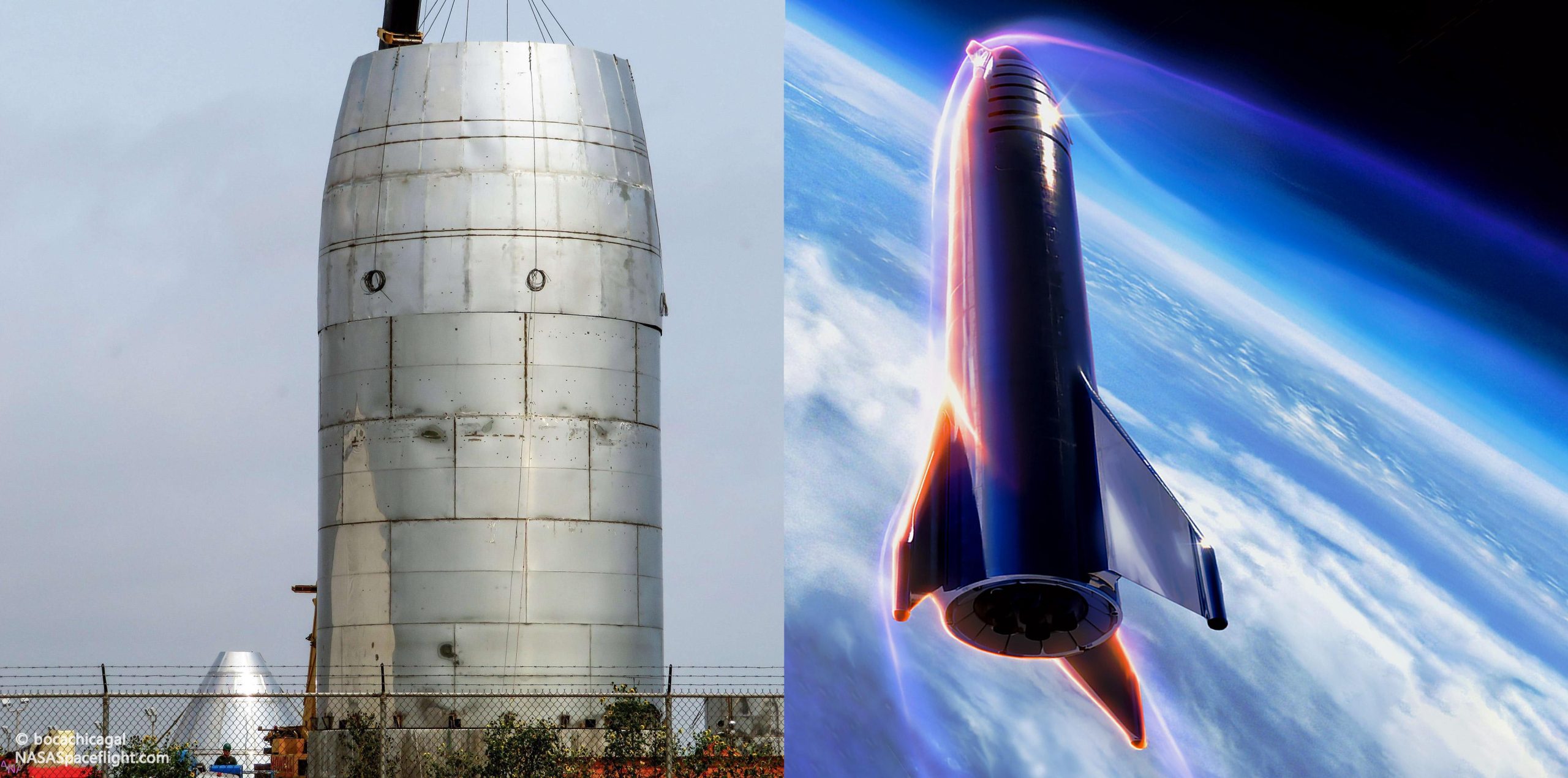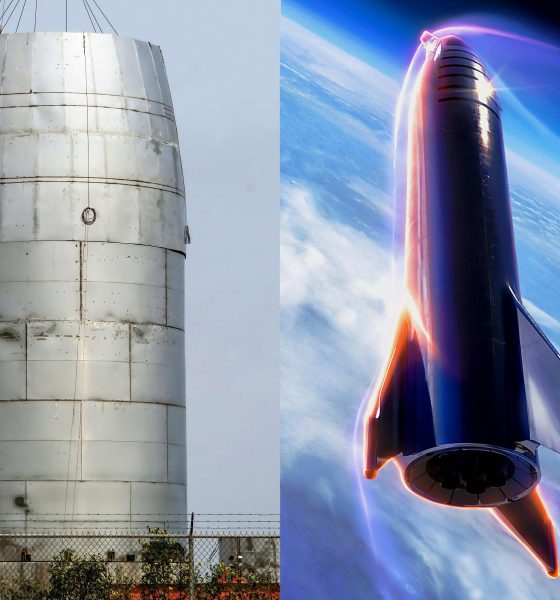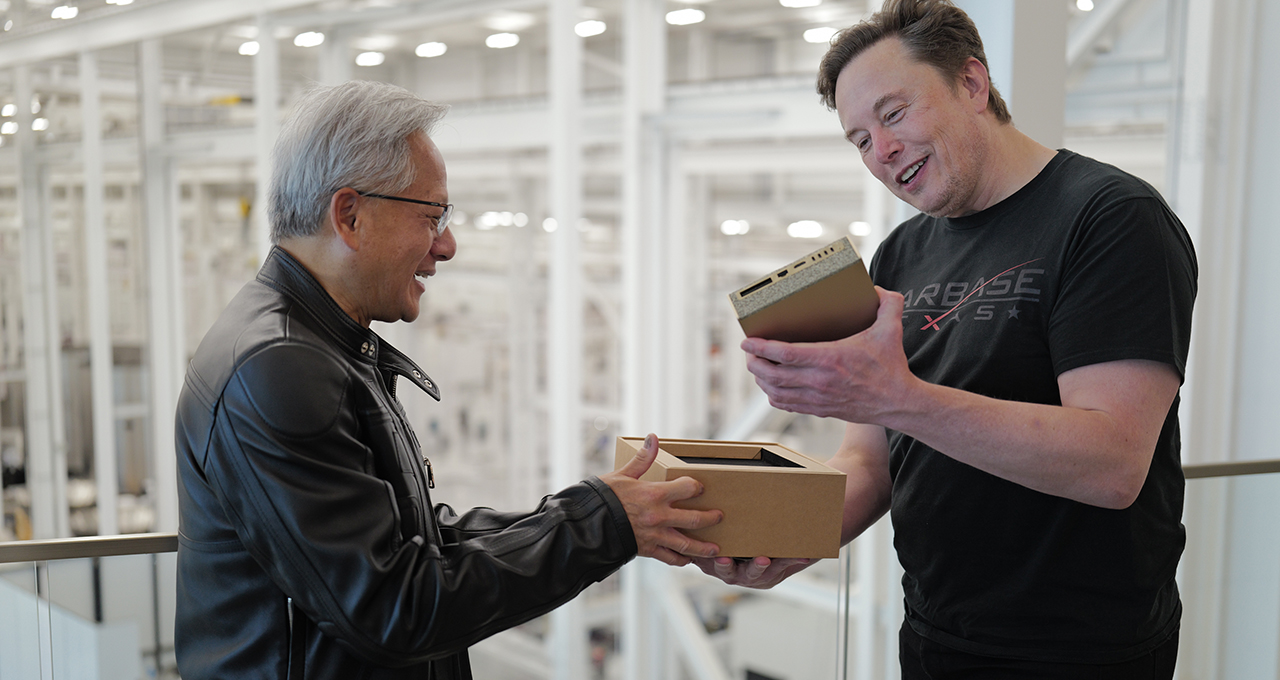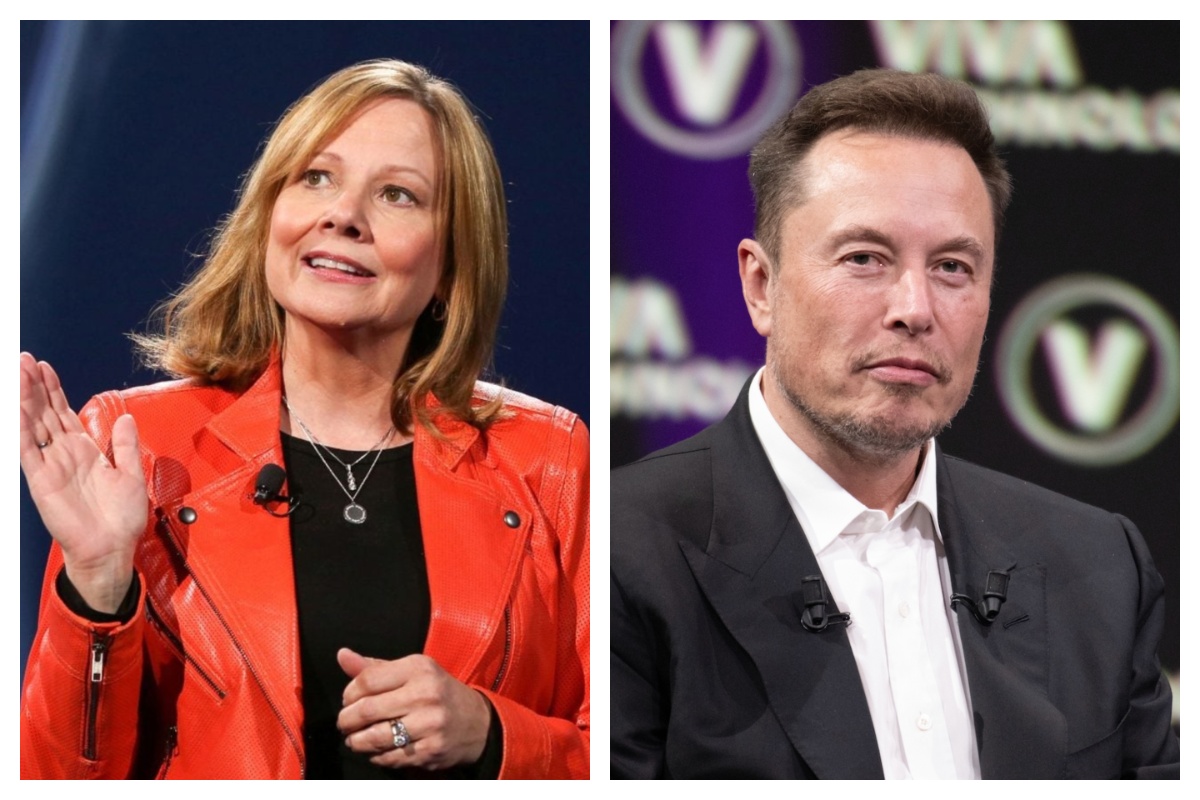

News
SpaceX stacks orbital Starship sections as Elon Musk teases June 20th event
SpaceX CEO Elon Musk says he will provide a public update on the development status of Starship and Super Heavy in an official presentation later this summer, possibly as soon as June 20th.
Meanwhile, SpaceX’s South Texas team have been busy at work on both Starhopper and a newer Starship, said by Musk to be the first orbit-capable prototype. In the last week, technicians have begun stacking several sections of the vehicle’s stainless steel hull, all fabricated and welded together side-by-side. On Thursday, May 9th, this progressed to the installation of the Starship’s first gently tapered nose section atop its cylindrical tank section. Likely the second- or third-to-last major stack before its aeroshell is assembled into one piece, the orbital prototype is starting to truly resemble a real Starship.
They grow up so fast…
CEO Elon Musk revealed SpaceX’s Mars colonization architecture back in September 2016 and has since provided design and development updates every 6-12 months. Between then now, Starship/Super Heavy (formerly BFR, fore-formerly ITS) has radically changed. Originally baselined with a diameter of 12 m (40 ft), an almost entirely carbon composite design, and a spaceship with bulky tripod fins/wings, SpaceX helped design, build, and test a full-scale liquid oxygen tank.
Six months after the tank was destroyed (likely intentionally) during testing, Musk announced in Sept. 2017 that ITS was now called BFR and would feature a leaner 9m (30 ft) diameter. He also revealed tentative plans to enlist BFR in a point-to-point Earth transportation scheme offering travelers access to almost anywhere on Earth in ~30 minutes. In September 2018, the design changed once more, gaining ~10m of height and three mobile tripod fins/wings/legs. Finally, just a few months after the 2018 update, Musk revealed that SpaceX was moving almost entirely away from carbon composites and would instead use stainless steel throughout BFR’s structure. BFR was also renamed to Starship/Super Heavy.


Episode 4: Revenge of the Steel
Given SpaceX’s breakneck pace of Starhopper and Starship development, it’s possible that Musk’s “probably June 20th” event is meant to correlate with a yet-unknown Starship or Starhopper milestone. Back in early January, Musk suggested that the first orbital Starship prototype could be “complete” as early as June. However, a few weeks later, Starhopper suffered a setback when its facade/nosecone toppled over and was irreparably destroyed.
Several months distant, it’s hard to actually say if that hardware loss has impacted SpaceX’s schedule much at all. Sans nose section, SpaceX instead conducted a number of wet dress rehearsals and successfully ignited Raptor and jumped the tethered Starhopper a few feet in early April, more or less right on schedule per a December 2018 Musk tweet.
At this point in time, it’s highly unlikely that the orbital Starship prototype will be truly complete just a month or two from now. Most notably, “completion” would require seven flight-ready Raptor engines, of which SpaceX is known to have only completed 3-4 in the last four months. Despite an apparent lack of Raptors for a June completion of the orbital prototype, it may actually be possible for SpaceX to complete (in a very rough sense) the main structure of the Starship.
Major progress has been made in the last few weeks and the orbital prototype is starting to look more and more like an actual Starship. Aside from finishing the vehicle’s propellant and header tanks and engine section/thrust structure, SpaceX still needs to install avionics, wiring, plumbing, cold-gas maneuvering thrusters, COPVs, access and umbilical ports and panels, an entire heat shield, its tripod wings/fins/legs, and more. At the same time, it’s unclear if SpaceX will attempt to send Starship to orbit on its own before the first Super Heavy booster prototype is complete, an even more massive undertaking ahead of the company.




For now, all we can do is wait and watch SpaceX’s gloriously bizarre steel Starship prototype continue to grow, while Starhoppper prepares for untethered hops a few thousand feet to the east. Things could be worse!
Check out Teslarati’s Marketplace! We offer Tesla accessories, including for the Tesla Cybertruck and Tesla Model 3.

Elon Musk
NVIDIA CEO Jensen Huang commends Tesla’s Elon Musk for early belief
“And when I announced DGX-1, nobody in the world wanted it. I had no purchase orders, not one. Nobody wanted to buy it. Nobody wanted to be part of it, except for Elon.”

NVIDIA CEO Jensen Huang appeared on the Joe Rogan Experience podcast on Wednesday and commended Tesla CEO Elon Musk for his early belief in what is now the most valuable company in the world.
Huang and Musk are widely regarded as two of the greatest tech entrepreneurs of the modern era, with the two working in conjunction as NVIDIA’s chips are present in Tesla vehicles, particularly utilized for self-driving technology and data collection.
Nvidia CEO Jensen Huang regrets not investing more in Elon Musk’s xAI
Both CEOs defied all odds and created companies from virtually nothing. Musk joined Tesla in the early 2000s before the company had even established any plans to build a vehicle. Jensen created NVIDIA in the booth of a Denny’s restaurant, which has been memorialized with a plaque.
On the JRE episode, Rogan asked about Jensen’s relationship with Elon, to which the NVIDIA CEO said that Musk was there when nobody else was:
“I was lucky because I had known Elon Musk, and I helped him build the first computer for Model 3, the Model S, and when he wanted to start working on an autonomous vehicle. I helped him build the computer that went into the Model S AV system, his full self-driving system. We were basically the FSD computer version 1, and so we were already working together.
And when I announced DGX-1, nobody in the world wanted it. I had no purchase orders, not one. Nobody wanted to buy it. Nobody wanted to be part of it, except for Elon.
He goes ‘You know what, I have a company that could really use this.’ I said, Wow, my first customer. And he goes, it’s an AI company, and it’s a nonprofit and and we could really use one of these supercomputers. I boxed one up, I drove it up to San Francisco, and I delivered it to the Elon in 2016.”
The first DGX-1 AI supercomputer was delivered personally to Musk when he was with OpenAI, which provided crucial early compute power for AI research, accelerating breakthroughs in machine learning that underpin modern tools like ChatGPT.
Tesla’s Nvidia purchases could reach $4 billion this year: Musk
The long-term alliance between NVIDIA and Tesla has driven over $2 trillion in the company’s market value since 2016.
Elon Musk
GM CEO Mary Barra says she told Biden to give Tesla and Musk EV credit
“He was crediting me, and I said, ‘Actually, I think a lot of that credit goes to Elon and Tesla…You know me, Andrew. I don’t want to take credit for things.”

General Motors CEO Mary Barra said in a new interview on Wednesday that she told President Joe Biden to credit Tesla and its CEO, Elon Musk, for the widespread electric vehicle transition.
She said she told Biden this after the former President credited her and GM for leading EV efforts in the United States.
During an interview at the New York Times Dealbook Summit with Andrew Ross Sorkin, Barra said she told Biden that crediting her was essentially a mistake, and that Musk and Tesla should have been explicitly mentioned (via Business Insider):
“He was crediting me, and I said, ‘Actually, I think a lot of that credit goes to Elon and Tesla…You know me, Andrew. I don’t want to take credit for things.”
GM CEO Mary Barra said to Andrew Sorkin at the New York Times Dealbook Summit that she pulled President Biden aside and said Tesla CEO @elonmusk deserved the credit for EVs:
“He was crediting me, and I said, ‘Actually, I think a lot of that credit goes to Elon and Tesla,'” Barra… pic.twitter.com/OHBTG1QfbJ
— TESLARATI (@Teslarati) December 3, 2025
Back in 2021, President Biden visited GM’s “Factory Zero” plant in Detroit, which was the centerpiece of the company’s massive transition to EVs. The former President went on to discuss the EV industry, and claimed that GM and Barra were the true leaders who caused the change:
“In the auto industry, Detroit is leading the world in electric vehicles. You know how critical it is? Mary, I remember talking to you way back in January about the need for America to lead in electric vehicles. I can remember your dramatic announcement that by 2035, GM would be 100% electric. You changed the whole story, Mary. You did, Mary. You electrified the entire automotive industry. I’m serious. You led, and it matters.”
People were baffled by the President’s decision to highlight GM and Barra, and not Tesla and Musk, who truly started the transition to EVs. GM, Ford, and many other companies only followed in the footsteps of Tesla after it started to take market share from them.
Elon Musk and Tesla try to save legacy automakers from Déjà vu
Musk would eventually go on to talk about Biden’s words later on:
“They have so much power over the White House that they can exclude Tesla from an EV Summit. And, in case the first thing, in case that wasn’t enough, then you have President Biden with Mary Barra at a subsequent event, congratulating Mary for having led the EV revolution.”
In Q4 2021, which was shortly after Biden’s comments, Tesla delivered 300,000 EVs. GM delivered just 26.
News
Tesla Full Self-Driving shows confident navigation in heavy snow
So far, from what we’ve seen, snow has not been a huge issue for the most recent Full Self-Driving release. It seems to be acting confidently and handling even snow-covered roads with relative ease.

Tesla Full Self-Driving is getting its first taste of Winter weather for late 2025, as snow is starting to fall all across the United States.
The suite has been vastly improved after Tesla released v14 to many owners with capable hardware, and driving performance, along with overall behavior, has really been something to admire. This is by far the best version of FSD Tesla has ever released, and although there are a handful of regressions with each subsequent release, they are usually cleared up within a week or two.
Tesla is releasing a modified version of FSD v14 for Hardware 3 owners: here’s when
However, adverse weather conditions are something that Tesla will have to confront, as heavy rain, snow, and other interesting situations are bound to occur. In order for the vehicles to be fully autonomous, they will have to go through these scenarios safely and accurately.
One big issue I’ve had, especially in heavy rain, is that the camera vision might be obstructed, which will display messages that certain features’ performance might be degraded.
So far, from what we’ve seen, snow has not been a huge issue for the most recent Full Self-Driving release. It seems to be acting confidently and handling even snow-covered roads with relative ease:
FSD 14.1.4 snow storm Ontario Canada pic.twitter.com/jwK1dLYT0w
— Everything AI (@mrteslaspace) November 17, 2025
I found the steepest, unplowed hill in my area and tested the following:
• FSD 14.2.1 on summer tires
• FSD 14.2.1 on winter tires
• Manual drivingBut I think the most impressive part was how FSD went DOWN the hill. FSD in the snow is sublime $TSLA pic.twitter.com/YMcN7Br3PU
— Dillon Loomis (@DillonLoomis) December 2, 2025
Well.. I couldn’t let the boys have all the fun!
Threw the GoPro up and decided to FSD v14.2.1 in the snow. Roads were not compacted like the other day, a little slippery, but overall doable at lower speeds. Enjoy the video and holiday music 🎶
Liked:
Took turns super slow… pic.twitter.com/rIAIeh3Zu3— 🦋Diana🦋 (@99_Colorado) December 3, 2025
Moving into the winter months, it will be very interesting to see how FSD handles even more concerning conditions, especially with black ice, freezing rain and snow mix, and other things that happen during colder conditions.
We are excited to test it ourselves, but I am waiting for heavy snowfall to make it to Pennsylvania so I can truly push it to the limit.








